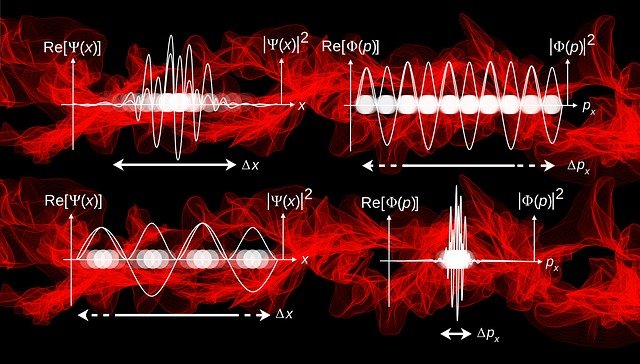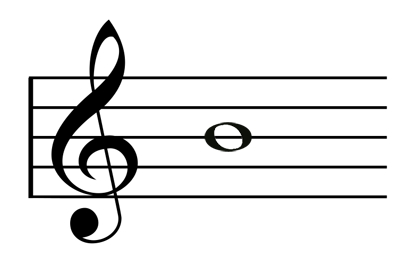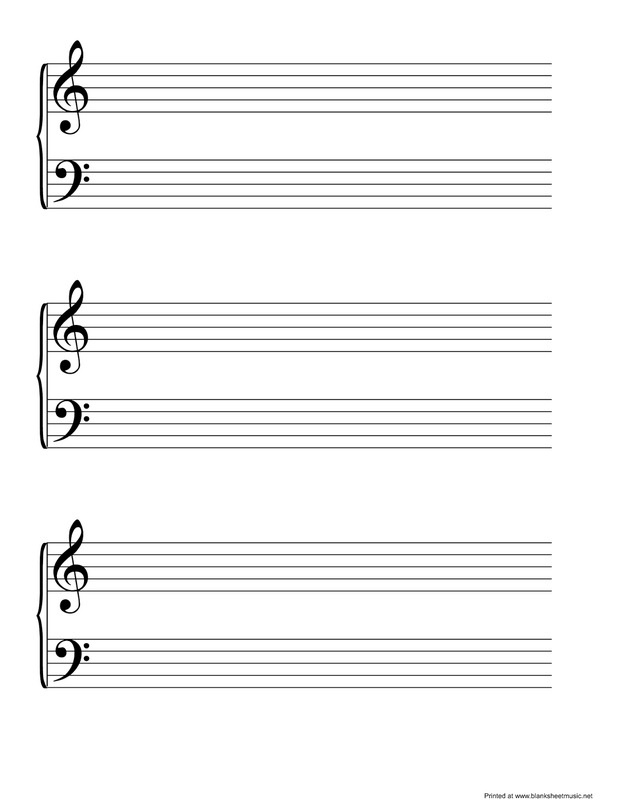Journey through the understanding of particle physics - Three
What is mass?
What is energy?
What is a particle?
What is reality?
These are fundamental and difficult questions that physicists have been attempting to answer for over a century.

[Image credits Pixabay]
When I was a kid I used to play the "What is the ... made of?" game, from the biggest thing that I could think of to the smallest.
It would go something like this:
Q: What is the universe made of?
A: Galaxies
Q: What are galaxies made of?
A: Star systems
Q: What are star systems made of?
A: Planets
... and so on until:
Q: What is matter made of?
A: Molecules
Q: What are molecules made of?
A: Atoms
Q: What are atoms made of?
A: Protons, neutrons and electrons
At the time that is as far as my answers could go.
I imagined atoms as tiny planetary systems with little balls of matter clunged together (protons and neutrons) and little corpuscules orbiting around (electrons).
This image of an atom is still very much in the mind of most people today and it makes it very hard to get some level of understanding of the quantum world.
The world of particle physicists has moved on greatly since this early view of the world but many modern breakthroughs haven't made it into the mind of most people because it is easier to visualise the world of the very small using concepts that we are familiar with.
I suspect that if you were to ask a particle physicist what atoms are made of, he/she would answer: mostly emptiness (aka void, vacuum) and a few elementary particles called quarks, antiquarks and gluons.
Of course, one would then ask, what are quarks, antiquarks and gluons made of?
To which the current answer would probably be that these are fundamental particles which are indivisible, single dimensional (infinitesimally small) objects.
But, you might ask, how can such an object exist if it doesn't have any dimension?
How can certain particles such as these have no mass?
How do they carry energy?
These are all genuine questions but to be able to provide some elements of answer we must put aside a lifetime of preconceptions about the nature of matter and energy.
We must forget about our mental pictures of the very small and open our mind to radical ways of thinking.
These highly counter-intuitive views may not be the final and ultimately accurate picture of the quantum world but they are often supported by very convincing mathematics and experimentation.
A Universe of Fields
At the heart of today's physicists current understanding of the quantum world lies the idea that the universe is permeated with different types of fields.
This area of physics is captured under the label of Quantum Field Theory (QFT).

[Image credits Pixabay]
What is a "field"?
A field is simply one or more physical properties of every point in space and time. This property can be represented by a simple number, a vector (direction and amplitude) or a group of vectors known as tensors.
Classical Fields
In the classical world (the one we are all familiar with) we can define various fields in every day life.
For example, imagine a closed room filled with air particles. Each point in space in the room can be associated with a particular air pressure.
Assuming that no perturbation is introduced in that room, all places in that room have the same air pressure (we ignore the fact that the height of the room causes the air pressure at floor level to be slightly higher than the air pressure near the sealink).
Every point in space in that room is at equilibrium, a level of minimal energy where pressure remains constant.
Imagine now that a sudden brief noise is emitted from one end of the room. This triggers a sudden change of air pressure at the source which travels in all directions across the room.
This change of air pressure experienced by every point in the room oscillates above and under equilibrium with an amplitude that dampens over time.
This change of property (air pressure) over time corresponds to a wave travelling at the speed of sound across the room.
With this particular example we define a type of field which represent the air pressure across the room at any given time.
We saw that an excitation of this field (sudden noise) at a single location, which is really an injection of energy into the field, causes a perturbation of air pressure that propagates across the room.

[Image credits - Pixabay]
Now, there are many examples of similar fields.
For example:
- The height of every water molecule at the surface of a swimming pool. An import of energy at one point (e.g. throwing stone in the pool) results in an oscillating change of height of the surface (wave) spreading across the pool.
- The temperature of every atom of an iron bar. A sudden change of temperature at one end propagates as a wave to the other end of the bar.
- The height of every point along a slack rope. Giving an upward tug at one end of the rope results in a wave traveling down the rope.
All of these classical fields have a few things in common:
- They all need a medium to carry energy disruptions in the form of waves. In the above example this medium takes the form of air molecules, water surface, iron bar and the rope.
- An excitation of any arbitrary energy results in a a disruption of the field propagating as a wave. For example, any tug on the rope will cause a wave of a certain amplitude to travel across.
Quantum Fields
In the last few decades particle physicists have spent a lot of energy investigating a revolutionary interpretation of quantum mechanics, the Quantum Field Theory.
QFT represents a major shift in how the world of particles can be understood.
According to the theory, particles (both fermions and bosons) should not be seen as single point objects but as excitation of the quantum fields.

[Image credits - Pixabay]
At its core QFT states that there is an individual type of field for each type of particle and forces. So far we know about 12 elementary particles (and their anti-particle equivalents) and 4 forces. This means that the theory predicts the existence of 12 + 4 different types of quantum fields.
This is actually not quite accurate since a new particle was proven to exist in the LHC a couple of years ago after being predicted for decades by physicists: the Higgs boson.
The field associated with the Higgs boson is thus called the Higgs field and is responsible for giving some of the 12 other particles their mass.
The Higgs field and its particle won't be considered for now in this post.
Quantum fields are thought to permeate all of the universe and, if the theory is right, are the true building blocks of the universe.
Quantum fields have similarities with classical fields in that they represent a given set of particular properties at every point of space time.
Like classical fields, quantum fields subjected to a local perturbation (injection of energy) resulting in energetic waves traveling across the field.
However quantum fields differ from classical fields in very significant ways.

[Image credits - Pixabay]
Firstly, quantum fields cannot be excited (disrupted) by any arbitrary amount of energy.
Instead, a minimum amount of energy is required in order to be transferred to the field. This is defined as a "quantum" of energy. It also follows that energy can only be exchanged with the field in multiples of that quantum value.
The value of this quantum of energy depends on the type of field.
Secondly, quantum fields have minimum energy levels which are non-zero. If the field was represented as a 2D surface, its minimum energy level would not correspond to an absolutely flat surface.
Instead quantum fields are subject to constant tiny energy fluctuations. With the above image in mind, the 2D surface would constantly jitter with small peaks and throughs.
We will see in a future post that these quantum fluctuations are critical to explain the constant creation of particle/antiparticle pairs out of the vacuum.
Thirdly, it is currently believed that quantum fields require no medium at all.
This is a hard one to understand but when you think about it, if these fields required specific mediums one would have to then ask what are these mediums made of and how these mediums would affect the motion of the waves in the field relative to the medium.
Before 1905 it was understood that light could behave as a wave through an electromagnetic field but most believed that a medium was required for this field to exist.
Through experimentation it was proven that the speed of light is actually constant irrespective of the motion of the observers. This definitely proved that the electromagnetic field does not need an underlying medium to exist.
QFT goes one step further and states that none of the quantum fields require any medium whatsoever.
In this view of the world quantum field are truly the most fundamental building blocks of nature.
A New Interpretation of Particles
I explained above how each known particle is associated with a specific type of quantum field.
I also described that fields can only be excited with a minimum quantum of energy.
It turns out that this minimum excitation of a quantum field is actually what we perceive as particles. In this vision, each particle corresponds to the smallest energetic wave that can be carried by the associated quantum field (ie. smallest possible amplitude and frequency)

[Image credits - Pixabay]
Now, there are two categories of quantum fields which obey two distinct laws of motion.
In the first category, waves travel through their field at the speed of light. These waves correspond to massless particles such as photons.
In the second category, waves can travel at any speed below the speed of light or be at rest relative to the observer. These waves correspond to mass particles such as quarks and electrons.
In practice some of these particles (waves) tend not travel freely across their field without impairment. Instead these particles interact with the corresponding field forces which held them together forming clusters, such as the quarks being held together into a proton or a neutron by the gluon field (strong nuclear force).
Creation and Annihilation of Particles
A major conclusion from the above is that particles can be created by injecting the required energy in the specific field.
How much energy?
Well, for particles with mass the energy required is E=mc2. The rest mass m of the particle is different for each field.
For massless particles the minimal energy is linked to the frequency of the wave (e.g. the frequency of the photon in the electromagnetic field) and 2 constants: the universal speed of light c and the planck constant ℎ.

[Image credits - Pixabay]
Because the energy of the waves can only be a multiple of a minimum quantum value, it ensues that mass and wave frequencies can only have discrete values.
These discrete values are however extremely small due to the tiny value of the plank constant ℎ
Furthermore, two waves traveling in opposite direction can collide and annihilate each other and result in the production of another wave (particle) in another field.
An example of this would be the collision between a quark and an anti-quark in the quark field annihilating each other and producing a new wave in the electromagnetic field in the form of a photon.
Fields don't just exist by themselves. Interactions between fields are possible through transfer of energy.
So what happens in one field does affect what happens in another field.
Having said that each field doesn't interact directly with all other fields. Instead, each field can interact directly with some other fields and indirectly with the remaining fields.
For example, the electric field can interact with the magnetic field.
And the gluon field can interact with the quark field.
This explains why particles colliding in the LHC can turn into other type of particles or a pair of particles can combine to produce another type of particle.
Energy, Mass and Momentum
The main properties of particles that I have explored through my journey so far are:
- Energy: Property which affects the excitation of the quantum fields. Energy can travel within a single field at speed under the speed of light for mass particles (interact with the Higgs field), or at the speed of light for massless particles (no interaction with the Higgs field).
- Mass: Property of certain particles which are subject to interaction with the Higgs field.
- (Relativistic) Momentum: Describes the motion of the wave particle across the quantum field. This property is related to the motion of the property and its mass at rest.
My QFT Analogy
How does this seemingly very complicated system of fields, waves in motion and energy transfer translate into the world we are all familiar with?
After all, our world doesn't appear chaotic, but definitely shows a lot of order and beauty.
My journey into the world of QFT reminds me of music and I will use this for an analogy. Like all analogies it has its limit and can only be used to help the reader understand how order and beauty can appear out of what appears to be a chaotic system.
The staffs represent fields.
Without any notes the staff is in a state of minimal energy and represent complete silence.
The staffs have rules though since each note can only be added to a line (tone) or between two lines (semi-tone). In that regards, notes obey some quantum rule.
Now the staff on its own is not so interesting. So let's add a note to it:
This single note represents an injection of energy into the staff field. It has a pitch and can be heard. In the analogy this note represents how we observe a single particle: a sound with a particular pitch.
Now when we look at a full music composition, the music sheet looks very complicated indeed:
[Image credits Pixabay]
If we try to understand the music by reading individual notes, it is very hard to figure out how the final result sounds like.
However it is undeniable that when the music is played according to the notes on the sheet one can hear beauty and order.

[Image credits - Pixabay]
Conclusions
In this post I have explained my current limited understanding of Quantum Field Theory and how something we used to once imagine as pointless particles are actually minimum energy excitations of underlying fields.
I have described the quantum nature of the fields which mandate that a minimum amount of energy must be supplied to a field to trigger a wave.
I have explained how these waves are in effect what we call particles and in the process I described two types of fields for massless and mass particles.
The mathematics of QFT consists therefore in finding and solving equations which describe the motion and energy transfers of vibrating systems (waves).
I have also left many questions unanswered, such as:
- How are forces explained by QFT?
- How does the Higgs field give mass to particles?
- How are other properties such as spin explained by QFT?
- How do virtual particles interact with other particles?
- And many more...
I hope to be able to provide some elements of answer for the questions above in future post.
Other posts in this series
- Journey through the understanding of particle physics - One
- Journey through the understanding of particle physics - Two bis


Point like particles are always problematic because of the self energy problem. If an electron is infinitely small then the field strength near the electron becomes infinitely large and the energy required to jam all that energy together also approaches infinity.
I think that is why strings and loops were proposed, it kind of/maybe tries to solve that issue.
https://quantummechanics.ucsd.edu/ph130a/130_notes/node475.html
Yes but QFT predicts particles to be waves spreading over space.
I think the wave amplitude at any given point in space is linked to the probability to observe that particle at that position.
Don't quote me on this as I'm far from being familiar with all these concepts.
Thanks for reading.
I was thinking more about when the size of an electron is measured (by firing other electrons at it). I think that they haven't found that size yet, it is so small.
This implies a lot of self-energy but I get confused by this stuff as well.
There are experiments trying to measure the size of the electron, and for the moment, the upper bound on the radius is of about 10-18 meters.
Congratulations! Your post has been selected as a daily Steemit truffle! It is listed on rank 3 of all contributions awarded today. You can find the TOP DAILY TRUFFLE PICKS HERE.
I upvoted your contribution because to my mind your post is at least 27 SBD worth and should receive 191 votes. It's now up to the lovely Steemit community to make this come true.
I am
TrufflePig, an Artificial Intelligence Bot that helps minnows and content curators using Machine Learning. If you are curious how I select content, you can find an explanation here!Have a nice day and sincerely yours,

TrufflePigVery nice post. I enjoyed the analogy with music by the way! First time I see this :)
Thanks a lot.
There is definitely beauty all around us emerging from all this quantum complexity.
Hi @irelandscape!
Your post was upvoted by utopian.io in cooperation with steemstem - supporting knowledge, innovation and technological advancement on the Steem Blockchain.
Contribute to Open Source with utopian.io
Learn how to contribute on our website and join the new open source economy.
Want to chat? Join the Utopian Community on Discord https://discord.gg/h52nFrV
What a wonderful, educating and yet simple way to explain such major concepts in physics! Absolutely love the analogy with music ! Really creative approach !
I am not a physicist myself, but I am really curious about the fundamental concepts and ideas in physics and astrophysics ! I am really glad that I've stumbled upon your article via @steemSTEM re-steem. Proving itself the best place to be regarding scientific content on this platform !
Cheers !
Thank you so much for such nice feedback.
I'm enjoying writing this series of posts as well. Trying to squeeze as much of my free time as possible to learn from various sources.
I must appreciate your contribution. Indeed I benefited from your scientific article.
I have a contrary view which I stand to be corrected if wrong. You wrote
From my knowledge in Engineering, EM waves and Transmission line, the speed of light is not constant. It varies from one medium to the other, the speed of light in a vacuum is different from the speed of light in water and is also different in glass
Thanks for your precision @ikchris.
You are correct that the speed of an electromagnetic wave in different mediums is not the same.
In general when we refer to the speed of light, we refer to the speed of light in a vacuum which is constant.
I believe physicists prefer to use the term "universal speed limit" c to describe this constant.
Oooo, you have cleared my understanding
Thanks
Please can I get in contact with you
My email is [email protected]
This a beautifully written piece @irelandscape (apt given the music analogy) and I think a few more concepts clicked into place for me.
Thanks Terry!
Such an inspiring write up. But as for the quest for what some elementary particles constitute, it'll be relevant and essential if one could recall the topic which reads; particulate nature of matter one will infer and derive for satisfying answer to the question of what things are made of in the physics world
I think physicists work on a certain interpretation of the world which they try to corroborate through experimentation.
So far I think QFT has proved to be very promising.
But of course this is not to say that QFT is the final, true, nature of the world. Just that it appears to be more precise than previous theories.
Your article just reminded me why I really enjoyed reading a lot about physics when I was younger.
Well done :)
Thanks! :-)
HTML Format:
This was really fascinating to me, I have always imagined particles as incredibly small but still something ' solid' ( for want of a better word). Very well explained, as was said in some other comments this article has helped me get my head around a few key concepts
Great, I'm glad you enjoyed it.
Stay tuned in for more about that subject in the coming days.
Cheers.